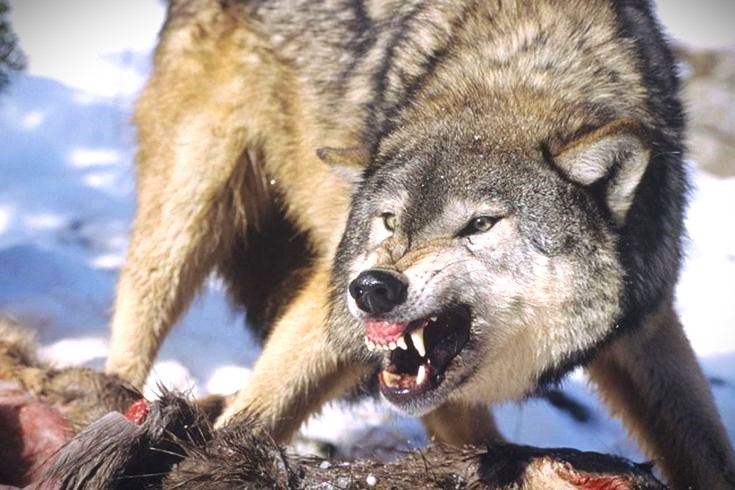Unlike In Wyoming, California Ranchers Can’t Touch Wolves
California has a growing number of wolves, and they’ve been attacking cattle at such a rate that the state’s compensation fund for ranchers is running out of money. Unlike Wyoming, ranchers there can’t kill wolves.
Mark Heinz
Cowboy State Daily
In stark contrast to how Wyoming ranchers can manage predatory wolves, if ranchers in California see them attacking their cattle, they can do little more than watch, and a state fund to compensate them for their losses is running out of money.
“You can see a wolf attacking, killing and eating one of your calves. Not only could you not kill it, you could not injure it in any way,” Kirk Wilbur, vice president of government affairs for the California Cattleman’s Association, told Cowboy State Daily.
That’s the polar opposite of wolf policy throughout much of Wyoming, where wolves can be shot on sight at any time.
Compensation Money Running Dry
Wolves started trickling into California from Oregon about a decade ago, and the northern part of the state now has an estimated 42 wolves in several established packs.
California launched a $3 million wolf livestock compensation pilot program in 2021, but it’s running out of money, according to the California Department of Fish and Wildlife (CDFW).
“To date, the Department of Fish and Wildlife has received a total of 102 grant applications for the CDFW Wolf Livestock Compensation Interim and Pilot Program that are projected to exhaust the current fund,” the agency recently announced.
The cattleman’s association will lobby the California Legislature to replenish the fund. But given the state’s projected $38 billion budget deficit, “it’s a tricky proposition this year,” Wilbur said.
“There are a lot of programs that are having their funding zeroed out, or their funding cut,” he said. Replenishing the depredation fund “is something we are interested in pursuing. We’re cognizant of that big, $38 billion elephant in the room.”
Came South from Oregon
The first documented wolf in recent memory in California was a lone radio-collared male, “wolf OR-7,” that came in from Oregon in 2011, Wilbur said.
California started formulating a wolf management plan, calling together representatives of various interest groups, including ranchers, hunters and conservationists.
“The process began in 2012. At that time, it was called a ‘wolf management plan,’ but it ended up being called a ‘wolf conservation plan,’” Wilbur said.
In 2013, there was a push to list wolves as an endangered species under both federal and state regulations, he said. That was finalized in June 2014.
“By that time, OR-7 had returned to Oregon,” Wilbur said. “There were actually no known wolves in California at the time that wolves were designated as an endangered species here.”
More wolves started coming south from Oregon, and by 2015 had established the first known pack in California.
“In a matter of about a decade, we’ve had a significant increase in the wolf population, and that has come with significant livestock depredation,” Wilbur said.
So far, established wolf packs have stuck mostly to the northern part of California. One lone radio-collared wolf, “OR-93,” wandered as far south as the Santa Barbra area, he said.
That wolf was stuck and killed by a car in Kern County, California, where Bakersfield is the county seat.
Completely Protected
Even if federal protection is lifted – as it has been in Wyoming, Montana and Idaho – wolves will still be listed as endangered under California law, and thus still essentially untouchable, Wilbur said.
Continue reading here
Subscribe to RANGE magazine
Call 1-800-RANGE-4-U
You may also like
-
Groups sue Biden Administration to protect Right Whales from offshore wind project
-
Omnibus bill provision would “unleash” electronic tracking on nation’s cattle
-
Arizona rancher sues to stop million-acre national monument
-
Bob West: Facing the reality of wolves, Colorado ranchers need to be prepared
-
Protect The Harvest: The whole truth about Western ranching


